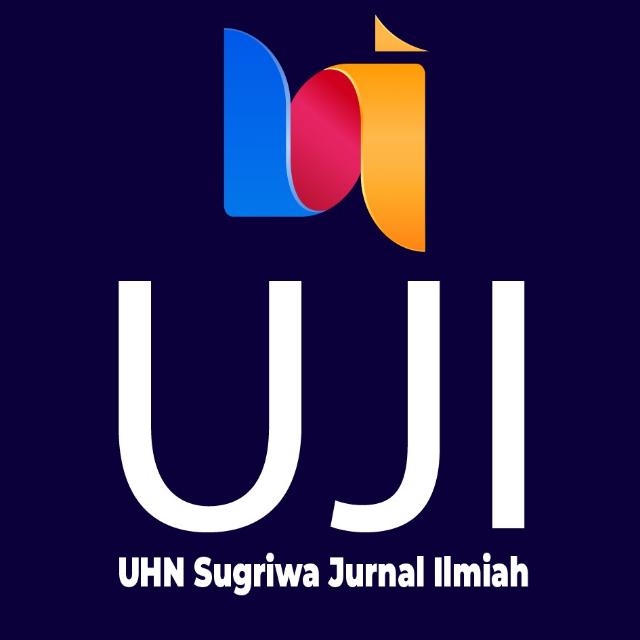Pengujian Fitokimia dan Kadar Flavonoid Total Ekstrak Etanol Daun Bodhi (Ficus Religiosa Linn.) Serta Relevansinya Dengan Literatur Ayurveda
DOI:
https://doi.org/10.25078/jyk.v5i2.1897Keywords:
Phytochemicals, Flavonoids, Ayurveda, Antioxidants, Rejuvination.Abstract
The development of the world of health with the use of drugs continues to increase by developing new biosyntheses from natural materials. One of the plants being explored was the bodhi plant (Ficus religiosa Linn.) through phytochemical testing and the total flavonoid content of ethanol extracts and their relevance to the Ayurvedic literature. This research uses Mixed Methods Sequential Exploratory Qualitative and Quantitative experimental laboratory with post test only control group design. The process of collecting data through observation, laboratory test results, and literature studies. Bodhi leaf samples were selected and determined for the
experimental group. The initial stage is the extraction process using the maceration method using a technical 96% ethanol solvent. Next, phytochemical testing was carried out with the addition of reagents. Determination of total flavonoid content was carried out by the UV-vis spectrophotometer method using quercetin as the standard. The results of the phytochemical test showed that the ethanolic extract of the leaves of the bodhi plant was positive for bioactive alkaloids, flavonoids, and steroids, so further testing was carried out on total flavonoid levels and analyzed by linear regression equations with Microsoft office excel. The straight line equation shows that Y = 0.0064x – 0.0003 with a correlation coefficient (R2) of 0. 9825. The total flavonoid content is 13.61 ± 3.26 mg/g. Through this analysis, conventional medical uses or indications indicate that flavonoids are useful as antioxidants with their mechanism of counteracting free radicals so that they are effective as prevention and treatment of a disease. This is relevant when
it comes to Ayurveda. Indications in Ayurveda state that the main indication of bodhhi is rejuvenation. This is also discussed in the Hindu religious book (Veda) called Rasayana tantra.
References
Adiputra, I. N. (2017). Fungsi Buah Dan Daun Tanaman Dalam Budaya Bali Sebuah Kajian Terhadap Tanaman Upacara. Bumi Lestari Journal of Environment, 17(2), 118. https://doi.org/10.24843/blje.2017.v17.i02.p03
Asmorowati, H., & Lindawati, N. Y. (2019). Penetapan kadar flavonoid total alpukat ( Persea americana Mill .) dengan metode spektrofotometri. Ilmiah Farmasi, 15(2), 51–63.
Berawi, K. N., & Agverianti, T. (2017). Efek Aktivitas Fisik pada Proses Pembentukan Radikal Bebas sebagai Faktor Risiko Aterosklerosis Physical Activity Effects on Free Radicals Development as Risk Factor of Atherosclerosis. Majority, 6(2), 85–90.
Bhalerao, S. A., & Sharma, A. S. (2015). Satish A. Bhalerao and Amit S. Sharma.pdf. 1(3), 50–60.
Cyinthia Hani, R., & Millanda, T. (2016). Review: Manfaat Antioksidan Pada Tanaman Buah Di Indonesia. Farmaka, 14(1), 184–190.
Febrianti, D. R. (2021). Kothari S, Thompson A, Agarwal A, du Plessis SS. Free radicals: their beneficial and detrimental effects on sperm function. Indian J Exp Biol. 2010 May;48(5):425-35. PMID: 20795359. Jurnal Pharmascience, 8(1), 94.
Haerani, A., Chaerunisa, A., Yohana, & Subarnas, A. (2018). Artikel Tinjauan: Antioksidan Untuk Kulit. Farmaka, Universitas Padjadjaran, Bandung, 16(2), 135–151.
Hapsari, A. M., Masfria, M., & Dalimunthe, A. (2018). Pengujian Kandungan Total Fenol Ekstrak Etanol Tempuyung (Shoncus arvensis L.). Talenta Conference Series: Tropical Medicine (TM), 1(1), 284–290. https://doi.org/10.32734/tm.v1i1.75
Heliawati Leny. (2018). Kimia Organik Bahan Alam. In Kimia Organik Bahan Alam. https://doi.org/10.52574/syiahkualauniversitypress.298
Ikalinus, R., Widyastuti, S., & Eka Setiasih, N. (2015). Skrining Fitokimia Ekstrak Etanol Kulit Batang Kelor (Moringa Oleifera). Indonesia Medicus Veterinus, 4(1), 71–79.
Kemenag Kabupaten Klungkung. (2020). No Title. Pemberkahan Pohon Bodhi Vihara Dharma Ratna.
Kesuma dan Yenrina. (2015). Antioksidan Alami dan Sintetik.
Paputungan, Z., Wonggo, D., & Kaseger, B. E. (2017). Uji Fitokimia Dan Aktivitas Antioksidan Buah Mangrove Sonneratia Alba Di Desa Nunuk Kecamatan Pinolosian Kabupaten Bolaang Mongondow Selatan Sulawesi Utara. Media Teknologi Hasil Perikanan, 5(3), 96. https://doi.org/10.35800/mthp.5.3.2017.16866
Parbuntari, H., Prestica, Y., Gunawan, R., Nurman, M. N., & Adella, F. (2018). Preliminary Phytochemical Screening (Qualitative Analysis) of Cacao Leaves (Theobroma cacao L.). EKSAKTA: Berkala Ilmiah Bidang MIPA, 19(2), 40–45. https://doi.org/10.24036/eksakta/vol19-iss2/142
Parwata Ni Made; Eka Putra, I Wayan Pramana, I. M. O. A. P. (2018). Aktivitas Antioksidan Senyawa Flavooid Pada Ekstrak N-Butanol Daun Cendana Dan Potensinya Sebagai Agen Antikanker Dengan Metode Brine Shrimp Lethality Test. CAKRA KIMIA (Indonesian EJournal of Applied Chemistry), 6(Vol 6 No 1 (2018): Volume 6, Nomor 1, 2018), 46–55. https://ojs.unud.ac.id/index.php/cakra/article/view/40863
Shankar, P. (n.d.). Ficus religiosa ( Linn .) bark extract secondary metabolites bestow antioxidant property inducing cell cytotoxicity to human breast cancer cells , MDA- MB-231 by apoptosis involving apoptosis-related. 1–26.
Sharma, S., & Kaushal, J. C. (2021). A Critical Review On Ashvattha leaves (Ficus Religiosa linn.) : An Ayurvedic Perspective And Current Practice. Int. J. Ayu. Alt. Med. Int. J. Ayu. Alt. Med, 2(21), 10–1610. http://www.ijaprs.com/index.php/ijapr/article/view/1664/1381
Sri Wahyuni, N. P. (2021). Uji Fotokimia, Antioksidan, dan Toksisitas Ekstrak Etanol Daun Bodhi (Ficus religiosa Linn.). Akademi Kesehatan Bintang Persada.
Vachaspati, A. (2014). “ An Experimental Evaluation Of ‘Vajeekarana’ Property Of Ashwatha (Twak) (Ficus Religiosa Linn.) With Special Reference To Its Spermatogenic Activity .”
Vasant Lad dan Robert E. Svoboda. (2007). Ayurveda (A. Mantik (ed.)). Paramita:Surabaya.
Widjaya, S., Bodhi, W., & Yudistira, A. (2019). Skrining Fitokimia, Uji Aktivitas Antioksidan, Dan Toksisitas Dari Ekstrak Daun Kersen (Muntingia Calabura L.) Dengan Metode 1.1-diphenyl-2-picrylhydrazyl (DPPH) dan Brine Shrimp Lethality Test (BSLT). Pharmacon,


















